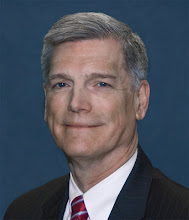 On February 9, the Commissioners held a briefing on the status of implementation of the NRC's Safety Culture Policy Statement (an archived webcast of the briefing is available here). In a nearly three-hour briefing, the Commissioners heard from a panel of industry and public stakeholders and a panel of NRC program managers. In the first panel, NEI's Janet Schlueter spoke for the community of fuel cycle facilities; Lee Cox spoke for the Organization of Agreement States and the interests of the state regulators who are employing the SCPS with the radioactive materials users licensed by Agreement States. Ed Halpin, President and CEO of South Texas Nuclear Operating Company, spoke about his experience in cultural transformation at STP and his passion in the pursuit of a healthy and robust safety culture. Attorney Billie Garde, long-time advocate for employee concerns, provided her perspective on the NRC's success with the SCPS and the work that she sees as the next step in implementation.
On February 9, the Commissioners held a briefing on the status of implementation of the NRC's Safety Culture Policy Statement (an archived webcast of the briefing is available here). In a nearly three-hour briefing, the Commissioners heard from a panel of industry and public stakeholders and a panel of NRC program managers. In the first panel, NEI's Janet Schlueter spoke for the community of fuel cycle facilities; Lee Cox spoke for the Organization of Agreement States and the interests of the state regulators who are employing the SCPS with the radioactive materials users licensed by Agreement States. Ed Halpin, President and CEO of South Texas Nuclear Operating Company, spoke about his experience in cultural transformation at STP and his passion in the pursuit of a healthy and robust safety culture. Attorney Billie Garde, long-time advocate for employee concerns, provided her perspective on the NRC's success with the SCPS and the work that she sees as the next step in implementation.Foremost among the items left to be done is the development of "common language". The task here is to describe the elements of safety culture in words that NRC, the Institute of Nuclear Power Operations, NEI and other stakeholders agree express their shared understanding of "safety culture". Until now, the two chief descriptions of safety culture used in the U.S., one from INPO and the other from the NRC, employ slightly different structures and terms to capture the features both institutions consider important in depicting safety culture. This might seem a matter of semantics, but trying to reconcile the differences when the stakes are high can be as taxing trying to convert Degrees Fahrenheit to Degrees Celsius in your head in the middle of a conversation.
The common language project got off to a great start in a joint NRC-INPO-NEI public workshop last December. Out of that workshop emerged an initial cut at a set of common terms that both NRC and INPO potentially could use. The draft common language now needs to be considered carefully, discussed further, and revised. Hopefully, by year's end or so, NRC and we will reach agreement on a shared set of terms to describe safety culture. That should ensure that everyone involved in evaluating, overseeing or maintaining safety culture fully understands one another.
The importance of common language was brought home to us in remarks made by Ed Halpin after the briefing ended. From his experience in cultural transformation at South Texas and his training in Crucial Conversations, he learned first hand the vital role that words play in establishing and communicating expectations and discussing gaps between expectations and outcomes. So, too, it is vitally important for everyone in our industry to know what NRC means, what INPO means, and what industry peers mean when they talk about any aspect of safety culture. The common language will greatly help us achieve that.
(A copy of the initial cut at the common language is available in the NRC's online documents system called ADAMS, under Accession Number ML113630124.)

Comments
http://en.wikipedia.org/wiki/Simplified_English